—ENGLISH-ANATOMY UNIT 2. (PART : 2) THE TISSUE
TISSUE :
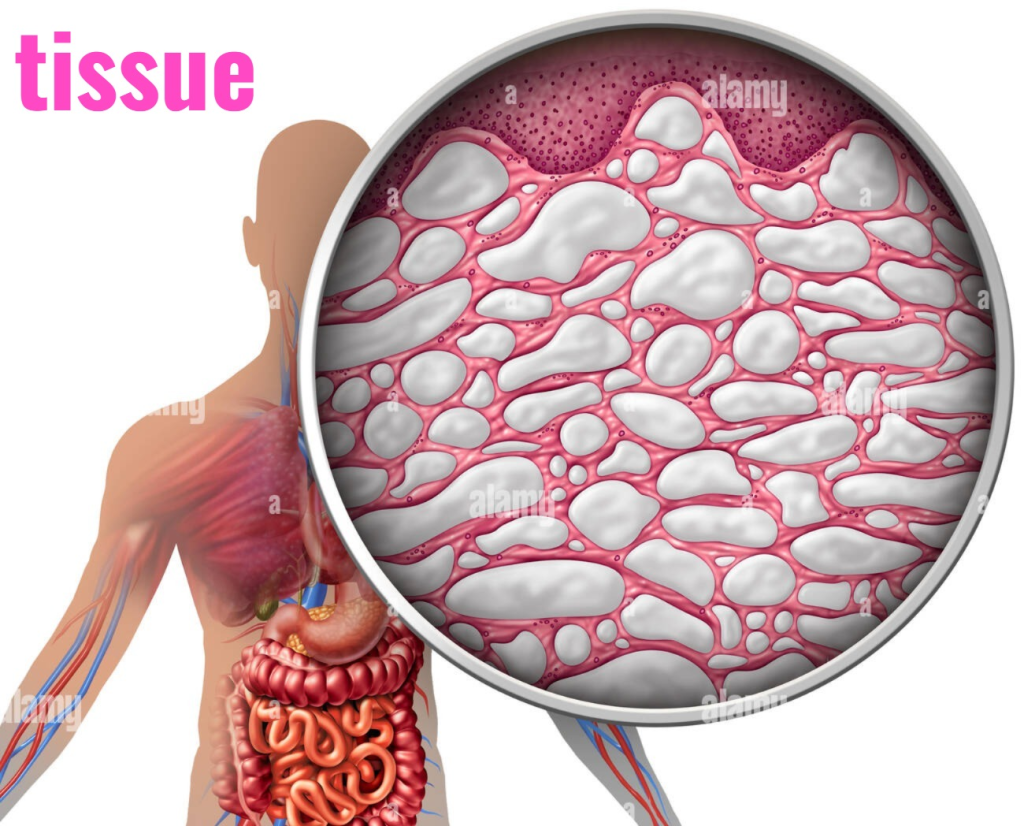
Human body is multi cellular and Complex. Cells function as the basic functional units within the body.
Cells that perform similar functions join together to form a particular type of tissue. A tissue can also contain more than one cell.
Many types of tissues are found in the human body. Each has a different function and structure.
Types of the Tissue:

Epithelial Tissue
Connective Tissue
Muscles Tissue
Nervous Tissue
Epithelial tissue (Epithelial Tissue):

This type of tissue is found in many places throughout the body. Which are mainly distributed on the surface or on the surface lining.
Epithelial tissue is distributed on the inner wall of a body cavity, glands, organ or blood vessels.
Functions of the Epithelial Tissue:
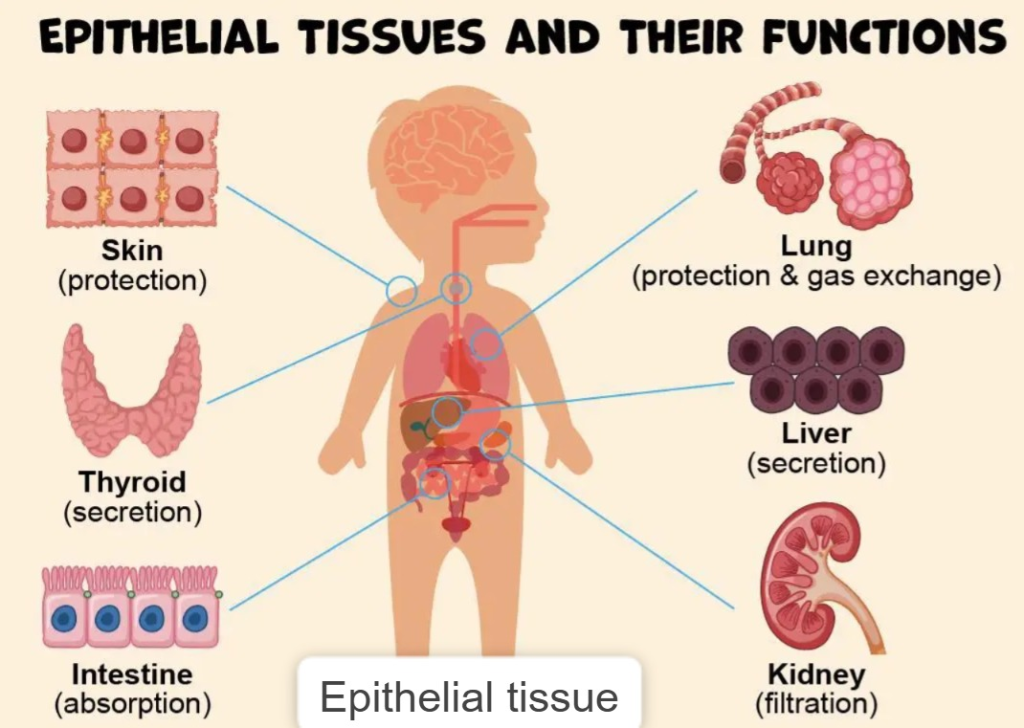
- Epithelial tissue is important for forming the inner wall of any organ.
- Epithelial tissue functions to provide protection where it is located in the inner wall of the organ.
- Epithelial tissue is a tissue involved in any type of secretion through secretory cells present in it.
- Epithelial tissue is a tissue that is located in the inner wall of a structure and therefore functions to absorb the material present there.
Characteristics of the Epithelial Tissue:

- Epithelial tissue is spread over the basement membrane of any organ or structure.
- The cells in this tissue are closely fitted to each other, that is, they are arranged close together.
- The matrix in this tissue is in liquid form.
- This tissue is associated with the functions of secretion and absorption due to the presence of special types of cells.
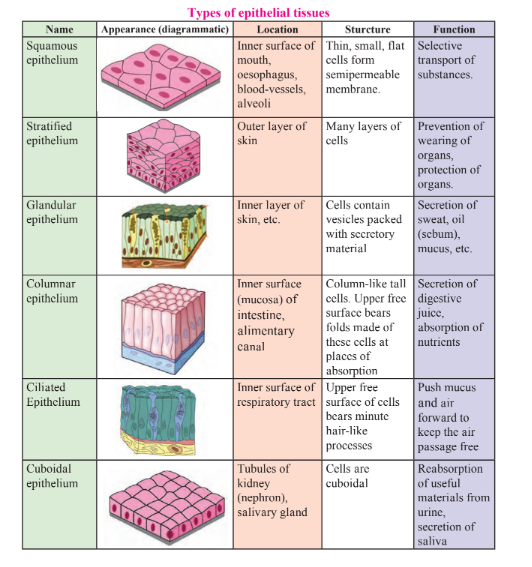
Classification of the Epithelial Tissue:
1. Simple Epithelial Tissue

This type of tissue is always found in a single layer.
2. Stratified Epithelial Tissue:

This tissue is arranged in multiple layers.
A. Classification of the Simple Epithelial tissue:

This type of tissue is found in the inner wall of any structure or organ. They are involved in activities such as absorption and secretion. There are mainly four types of this type of tissue.
1. Simple squamous epithelium tissue:

- This type of tissue is found in the inner wall of any structure or organ, i.e. in the basement layer. are scattered. Its cells are close to each other and are arranged flat and spherical. In the middle of them is the nucleus.
- This type of tissue is found in the inner wall of the heart, the alveoli of the lungs, the lining of blood vessels and lymph vessels.
2. Simple Cuboidal Epithelial Tissue:

The shape of the cells in this tissue is seen as cube-shaped. Which are closely connected to each other. This type of tissue is spread on the basement membrane. Usually this tissue is found in the renal tubules and thyroid gland.
3. Simple Columnar Epithelium Tissue:

- These cells are not rectangular in shape. Which is longer in length and shorter in width.
- This type of tissue is found in the lining of the respiratory tract and the lining of the alimentary tract. It also contains goblet epithelium cells which perform the function of mucus secretion.
4. Ciliated Simple Epithelial Tissue:

- This tissue is a type of tissue that is made up of cells of cuboidal and columnar tissue. The cells are the same. In addition, this tissue has hair-like processes on the cell margins, i.e., it has cilia, so it is called ciliated epithelium tissue.
- This type of tissue is especially found in the lining of the respiratory tract and the lining of the fallopian tubes. It is associated with specific movements here.
B. Stratified Epithelial Tissue:

- This type of tissue is made up of more than one layer. The size of each cell in this tissue is not the same. In which the cells of each layer are found in irregular size and shape.
- In this tissue, the cells of the bottom layer are found in large size and their size is reduced when they come to the surface.
- This type of tissue is mainly associated with protection and structural support.
Stratified epithelium tissue is divided into two parts.
1. Stratified Squamous Epithelial tissue.
2. Transitional Epithelial Tissue.
1. Stratified Squamous Epithelial tissue ( Stratified Squamous Epithelial tissue ).

Stratified squamous epithelium tissue is found in multiple layers. It is mainly divided into two parts.
A. Non-keratinized stratified epithelium tissue…
This tissue is mainly found in the wet surface areas of the body. Such as the conjunctiva of the eye, esophagus, vaginal cavity, fairings, etc..
They are cells with a nucleus. It has a flat shape.
B. Keratinized Stratified Epithelium Tissue…
This type of tissue is mainly found in dry areas of the body such as skin, hair, nails etc.
This tissue mainly contains keratin substance. Which resists water. So mainly evaporation cannot take place. It is Tissues are mainly characterized by
2. Transitional Epithelial Tissue:

This tissue is found in more than one layer but its main characteristic is that it has a basement membrane. There is no membrane.
Pear-shaped cells are found in it. This type of tissue is mainly found in the inner wall of the urinary bladder.
Connective Tissue:

- This type of tissue is widely distributed in our body.
- This tissue is mainly located around all organs.
- Connective tissue contains different types of cells and their arrangement is not close to each other.
- This tissue consists of a network of fibers that are connected to each other. The matrix is located in the middle of the cell. This matrix is semi-solid jelly-like.
Cells in a collective tissue:

1. Fibroblasts:
This cell in connective tissue is flat and large. It is rod-shaped. This cell produces elastic fibers and collagen fibers which are scattered throughout the tissue.
2. Adipocytes or Fat Cells:
In connective tissue, these cells are found in groups or even singly. These cells are found in very large numbers. Depending on the tissue, their size varies.
3. Macrophages:
These cells of connective tissue have phagocytic properties. Which are part of the white blood cells. They work by engulfing microorganisms and foreign material in the tissue digesting and removing them from the tissue. They work as protection against infection. These types of cells are arranged in different organs with different names. For example, in the liver, these cells are arranged as Kupffer cells. In the brain, these cells are arranged as microglial cells. They are mainly associated with protection.
4. Leukocytes:
This is a small cell of irregular shape. Which contains antibodies and performs functions related to maintaining immunity.
5. Mast Cell:
This cell has the same structure as the basophils in the blood. It produces histamine and heparin.
Histamine responds to allergic reactions and heparin acts as an anticoagulant
Functions Of Connective Tissue:

Connectivity tissue is widely distributed in the body. It is a strong tissue. It performs the following functions.
1. This tissue, having a network of fibers, helps in connecting one structure to another.
2. The fibers in connective tissue provide structural support around any organ.
3. Since connective tissue is strong, it provides support to the structure and holds the structure together.
4. Since connective tissue is strong, it also functions as a protection for the organs below it.
5. The cells in connective tissue also function as a transporter of material from one tissue to another.
6. It retains heat in the body and also acts as insulation.
Classification of Connective Tissue:

Areolar Connective Tissue:
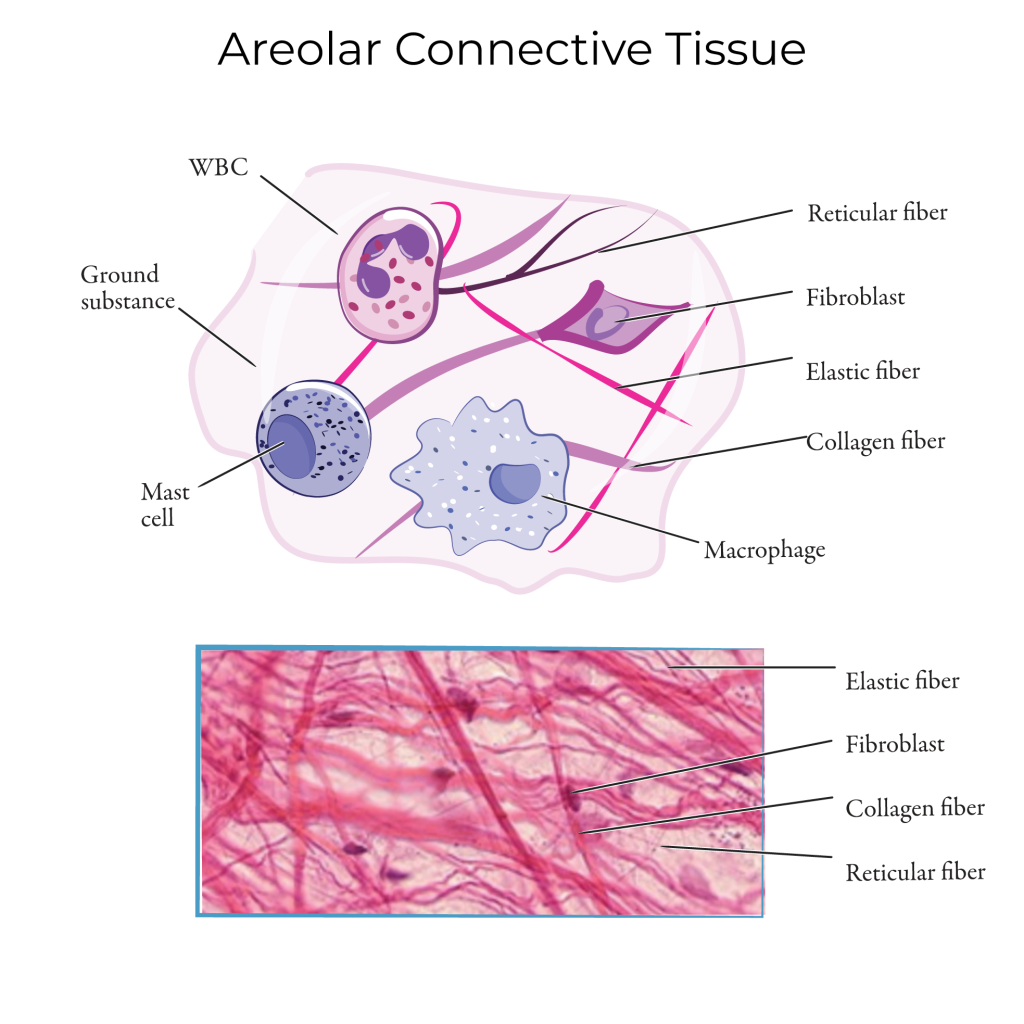
This type of tissue is found in many places in the body. It has a loose arrangement of cells. The matrix is semi-solid and soft like jelly. It contains mainly all the cells of connective tissue, i.e. fibroblasts, macrophages and mast cells. Elastic and collagen fibers are scattered between the tissues, which are important for connecting and supporting the structure.
This type of tissue is found in the walls of blood vessels, under the skin, and in many other places.
Adipose Tissue:
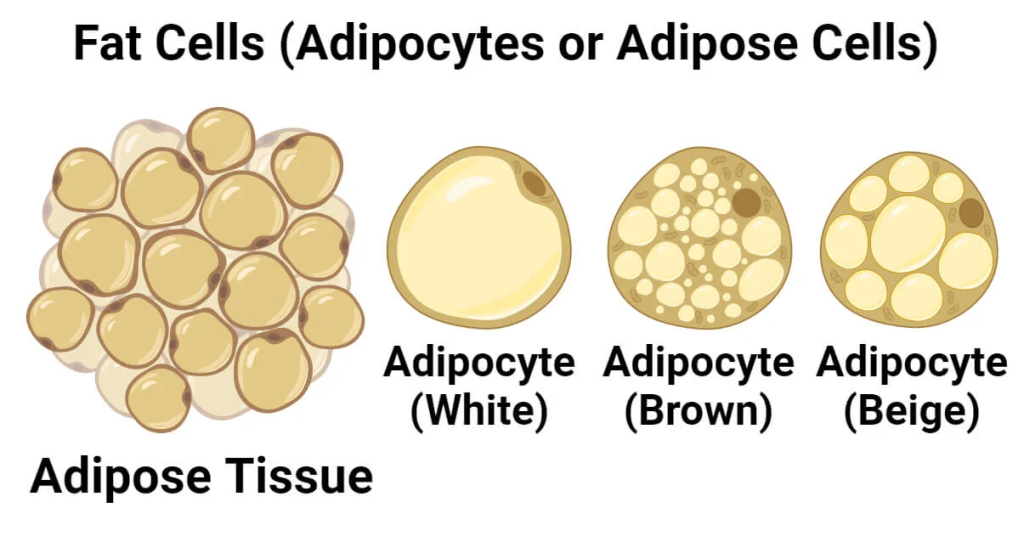
This type of tissue contains fat cells and fat globules. Its matrix is solid. This type of tissue works to provide protection around some delicate organs inside the body. For example. Kidney.
There are two types of this tissue.
1. White Adipose Tissue:

This accounts for 20 to 25% of the total body weight. The growth of this tissue is seen on the energy intake of the person and the physical activity in his body. This tissue is a loose connective tissue.
This tissue is found around structures such as the kidneys, eyes, etc. It functions to provide support and protection to the structure.
2. Brown Adipose Tissue:

This type of tissue is only found inside newborns. It has a large network of blood capillaries connected to it. Due to which it is metabolized and produces energy and heat and is very important for maintaining the temperature of the child’s body. Since the temperature regulating center in the child is not mature, this tissue works to maintain heat in the additional body. This tissue is loose connective tissue.
Dense Connective Tissue:
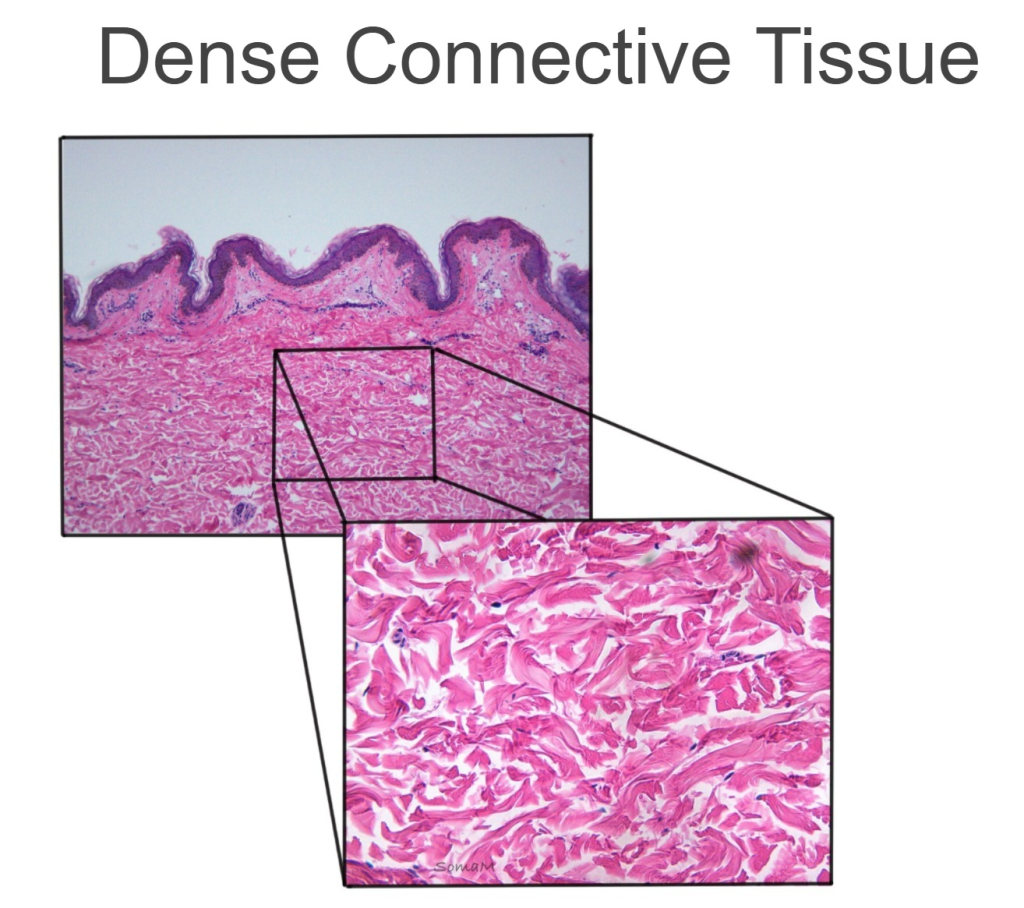
Fibrous tissue (Fibrous tissue):

In this, bundles of fibers are arranged in the middle of the tissue and it contains little matrix. Fibrocytes cells are also arranged in between the tissues.
This is a type of dense connective tissue whose specific functions are as follows.
It provides attachment to muscles with bones.
It provides attachment to bones with ligaments.
The periosteum layer of the outer wall of bones is made up of this type of tissue.
Delicate tissues in the body cavity They are also present for the protection of the structure.
Elastic Tissue:

This tissue is the branching of elastic fibers Fibroblast cells are also found between tissues. These tissues are mainly found in organs that have elasticity. For example. This type of tissue is also found in the walls between trachea, bronchi, and blood vessels.
Lymphoid Tissue:

This tissue contains branches of reticular fibers.
Its matrix is semi-solid. It contains cells similar to the wbc cells in the blood.
This type of tissue is found in places like the spleen, lymph nodes, appendix, tonsils, etc. This type of tissue works for the protection of the body.
Cartilage Tissue:

Cartilage contains chondrocyte cells. Which are located in the matrix. Its matrix is solid. Three main types of cartilage are distinguished.
1. Hyaline Cartilage:

This cartilage is shiny and transparent. It contains collagen fibers. This cartilage is located at the two ends of the bone, that is, this cartilage is found at the joint. This cartilage gives the joint the ability to withstand pressure and also works for smooth and pain-free movement. This cartilage is found at the ends of long bones, in the front of the ribs, and in the areas of the trachea and laryngs.
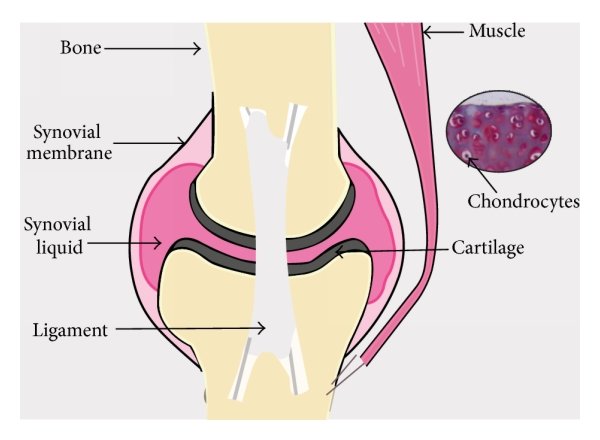
2. Fibro Cartilage:

This cartilage consists of chondrocyte cells scattered throughout a matrix. It also contains collagen fibers. This cartilage functions to provide support and is found in the intervertebral discs. The function of this cartilage is to maintain the movement and flexibility of the body.
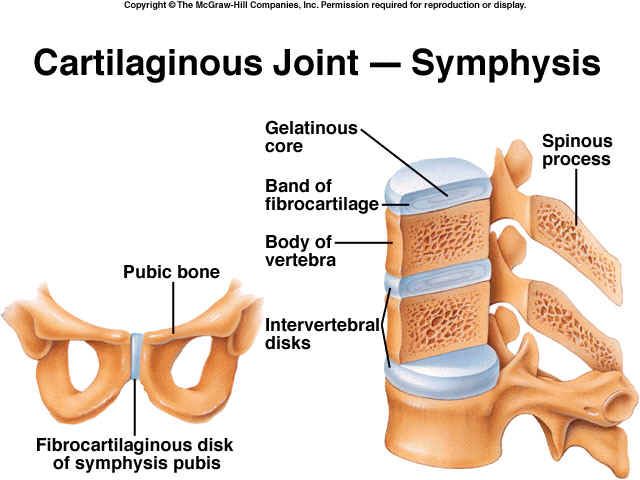
3. Elastic Cartilage:

This cartilage contains chondrocyte cells. They form a thread-like network of elastic fibers in the matrix. The main function of this type of cartilage is to maintain the shape and flexibility of the organ. This cartilage is located in the external ear and the larynx.
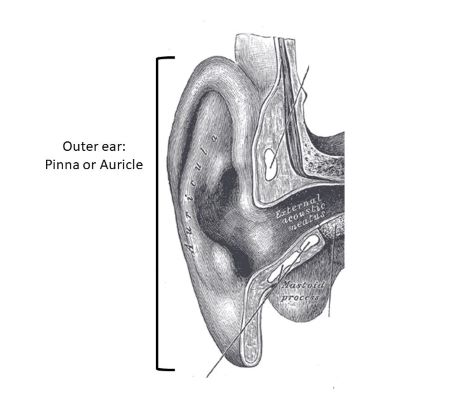
Blood:

Blood is a special type of connective tissue, complete information about which is given in detail in the unit of blood.
Bone:

Bone is a type of connective tissue. Its structure consists of osteocyte cells.
It is a type of dense connective tissue. It functions for support and protection in the body. It provides attachment to muscles. So that different types of movements can be done. There are two main types of bone.
- Compact bone
- Spongy bone
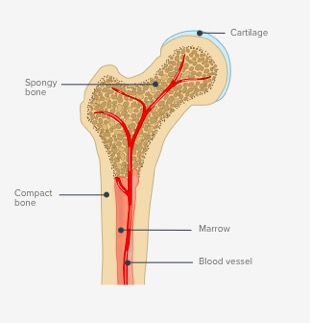
The main function of bones in the body is to provide a structural framework for the body.
Muscle Tissue:

Muscle tissue is made up of a certain type of contractile cell, which has the capability to contract. There are three types of total muscles.

1. Skeletal Muscles
2. Smooth Muscles (Smooth Muscles)
3. Cardiac Muscles (Cardiac Muscles)

1. Skeletal Muscles:

- These muscles are also known as other voluntary muscles. Because it works according to our will. With its help, the body moves. Therefore, it is called voluntary muscles.
- These are straight type muscles.
- The structure of skeletal muscles consists of many bundles of muscle fibers.
- Fiber cells are located between the muscle fibers. They are arranged in a cylindrical shape. It also contains a nucleus.
- Skeletal muscles work for different types of moments.
2. Smooth Muscles:

- These muscles are also called involuntary muscles because they are not under our voluntary control. These muscles are of the unstriped type i.e. circular shape.
- When these muscles are examined under a microscope, cigarette-shaped cells are seen inside them. Nucleus is present in them. These types of muscles are found in the lining of blood vessels, respiratory tract, and alimentary tract.
3. Cardiac Muscles:
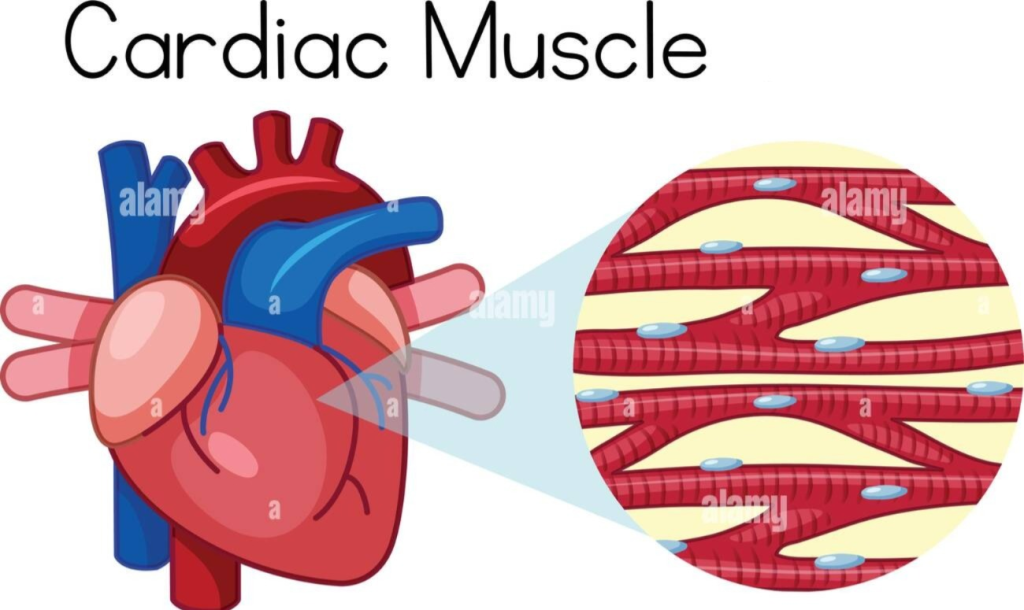
- These muscles are involuntary type muscles. Its function is also not under our control. These muscles are specifically located in the middle layer of the heart, the myocardium. They are called cardiac muscles.
- These muscles have straight fibers. They are closely connected to each other. The pumping action of the heart is seen due to the contraction and relaxation of these muscles.
Functions Of Muscles Tissue:

- Contraction and relaxation help in different types of movements in the body.
- Helps in maintaining the body’s posture.
- It functions in heat production in the body.
- Through the function of the nervous system, it maintains proper muscle tone and maintains normal posture.
Nervous Tissue:
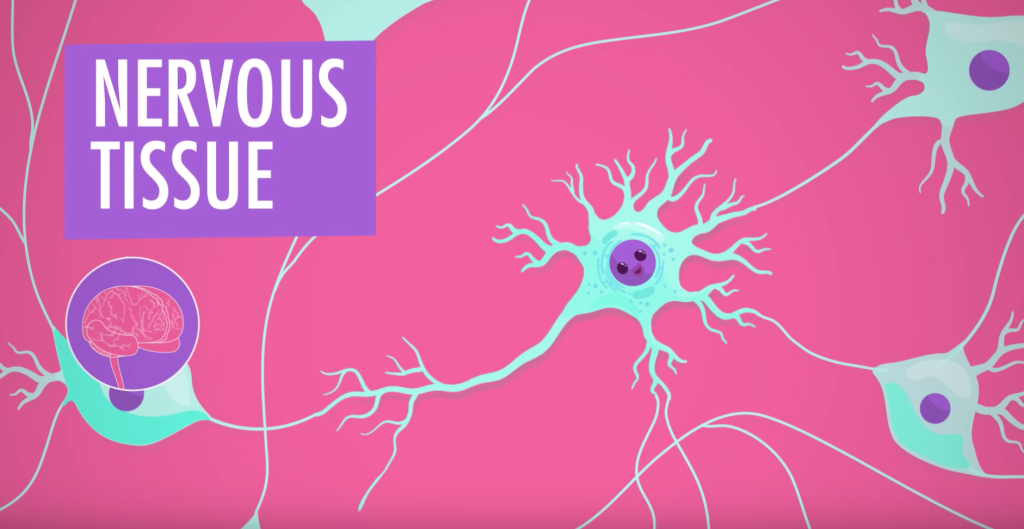
This tissue is made up of nerve cells. The nerve cell is called a neuron. Each neuron has a structure of cell body, axon and dendrites.
There are two types of cells in nervous tissue.
1. Excitable cells:
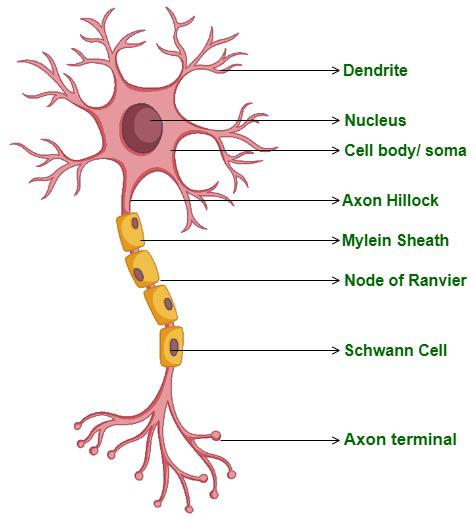
Which includes cells that transmit and receive impulses, i.e. neurons. This neuron has the properties of excitability and conductivity.
2. Non Excitable Cells:
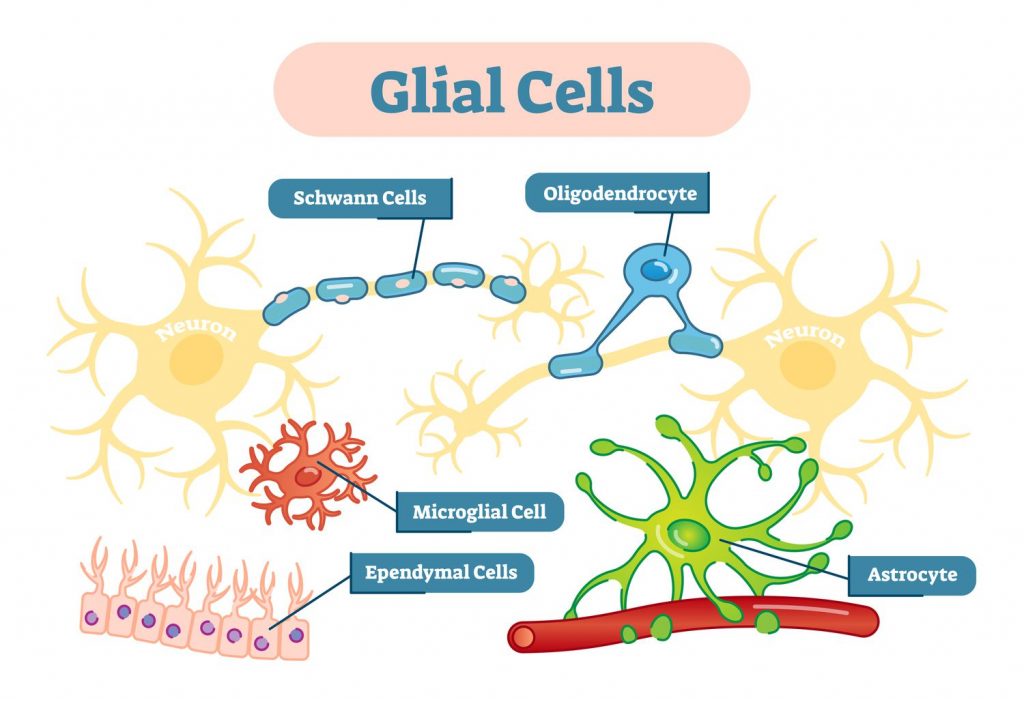
These cells are also called glial cells. Which are not involved in the conduction of impulses and function to support the nerves and nerve cells.
Tissue Regeneration:

This is a process in which dead or damaged cells and tissues are repaired and new tissues and cells are formed, which is called tissue regeneration. Mainly found in the following types.

1. Labile Cell:
These are the types of cells in the cell body that undergo continuous cell division. For example, cells in bone marrow, blood cells, spleen and lymphoid tissue cells.
2. Stable Cell:
These cells have the capacity to multiply and divide but they do not undergo continuous division. After some time, cell division stops in them. For example, smooth muscles, cells inside bones.
3. Permanent Cell:
Once these cells have completed normal growth and maturation, they never have the capacity to divide again. These cells include cardiac cells and nerve cells.
